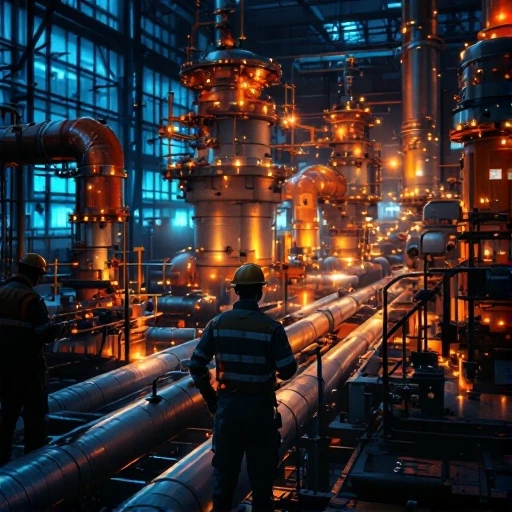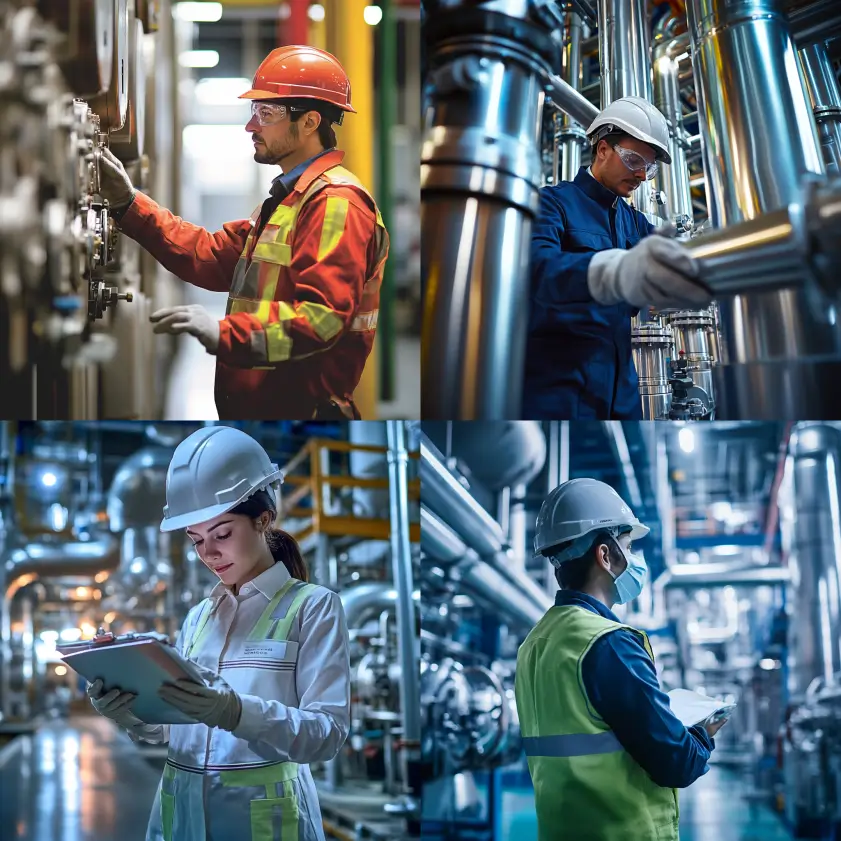
Table of Contents
ToggleIn the high-stakes world of engineering, there’s no room for mistakes. Systems need to be reliable. Designs must perform under pressure. In many cases, lives depend on the standards engineers follow. Why is ASME needed? The answer lies in ASME’s foundational role in establishing the technical standards that guide safe, reliable, and efficient systems.
ASME, the American Society of Mechanical Engineers, was founded in 1880, specifically to address the frequent boiler explosions that plagued the Industrial Revolution. Since then, ASME has become a globally recognized authority, developing and overseeing engineering standards that range from pressure vessels and pipelines to elevators and nuclear plants.
Today, ASME standards are adopted in over 100 countries, with more than 600 codes and standards spanning a wide variety of engineering disciplines. This global reach makes ASME a cornerstone in engineering—ensuring consistency, safety, and quality across industries worldwide. The question, why is ASME needed, is answered by the safety, innovation, and trust it helps create within these industries.
By providing clear, consistent guidelines, ASME reduces uncertainty, prevents errors, and promotes operational efficiency. It’s this reliability that makes ASME critical to the functioning of modern engineering systems, keeping them safe and efficient.
Simply put, why is ASME needed? Because ASME standards provide the foundation for innovation, safety, and quality in engineering across the globe. Without these standards, industries would face unnecessary risks, inefficiencies, and uncertainties. ASME offers a pathway to consistent, high-quality results that protect lives and ensure the smooth operation of vital systems in industries like energy, manufacturing, aerospace, and more.

Safety is at the core of why ASME is needed. Whether it’s a pressure tank in a chemical plant or the piping in a nuclear reactor, the consequences of design or manufacturing failure can be catastrophic.
Before ASME’s Boiler and Pressure Vessel Code (BPVC) was introduced, boiler explosions were tragically common. The BPVC, introduced in 1915, changed everything. It laid out uniform guidelines for the construction, testing, inspection, and operation of pressure vessels. Today, it is one of the most widely adopted engineering codes in the world.
According to the U.S. Department of Labor, compliance with ASME standards has significantly reduced injuries and fatalities related to mechanical equipment. Source.
In many jurisdictions, ASME compliance is not optional. Municipalities, states, and countries often incorporate ASME standards into their legal frameworks. For instance, most U.S. states require ASME certification for boilers and pressure vessels used in commercial or industrial settings.
This legal recognition ensures that systems are not just theoretically safe—they meet strict, enforceable safety thresholds. Compliance also protects organizations from liability and downtime caused by failed inspections or accidents.
ASME standards apply at every stage of the lifecycle—design, fabrication, testing, maintenance, and inspection. Whether a company is developing a new power plant or upgrading an old HVAC system, ASME ensures that the structure will hold under pressure—literally and figuratively.
This is particularly vital in industries where temperature, pressure, or hazardous materials can elevate risk. For example, ASME’s Section VIII of the BPVC sets forth detailed rules for pressure vessel design and construction, ensuring resilience under even the most extreme operating conditions.
ASME doesn’t just prevent failures—it builds consistency and trust. With every certified product, it sends a message: “This equipment meets rigorous, internationally recognized standards.”
Engineering is increasingly global. A piece of equipment designed in the U.S. might be manufactured in Germany, installed in Brazil, and serviced in Southeast Asia. ASME standards provide a common language that bridges geographical, regulatory, and operational differences.
Manufacturers who adhere to ASME codes can confidently export products and systems across borders, knowing they meet the expectations of international buyers and regulators.
This is one reason why Red River prioritizes ASME-compliant fabrication. Our clients rely on us not just for technical excellence, but for seamless delivery of code-compliant solutions across project locations and industries. Learn more about our commitment to compliance and quality.
Clear standards also streamline communication between engineers, designers, inspectors, and contractors. When everyone speaks the same technical language, mistakes are minimized, project timelines stay on track, and budgets are better maintained.
Instead of reinventing the wheel, engineers can build upon a proven foundation, saving time and reducing the risk of trial-and-error.
ASME certification isn’t just a technical checkbox—it’s a signal of quality to clients, investors, insurers, and regulators. It builds trust by proving that a product or system is engineered for performance and safety.
This is especially important for critical infrastructure projects like hospitals, data centers, or energy facilities. In these high-stakes environments, stakeholders expect not just functionality, but long-term reliability and accountability.

One of the greatest myths about engineering standards is that they limit creativity. In reality, ASME does the opposite—it enables innovation by providing a secure, proven framework to build upon.
ASME is not a static institution. It continuously evolves through input from thousands of volunteer engineers, researchers, and industry experts. As new materials, processes, and technologies emerge, ASME reviews and updates its standards accordingly.
For example, additive manufacturing (3D printing) and hydrogen energy systems are both being addressed by newly developed ASME codes. These help innovators scale new technologies safely and confidently.
You can explore ASME’s full list of updated and emerging standards on their official standards page.
Companies that incorporate ASME standards into their workflows are better positioned to lead in their fields. They reduce costly rework, avoid non-compliance penalties, and gain a competitive edge in markets where safety and quality are paramount.
For engineering teams, ASME fosters discipline, continuous learning, and better decision-making—traits that are foundational to high-performing organizations.
In an era defined by rapid development and complex systems, ASME stands as a pillar of safety, clarity, and global unity. It’s more than a list of codes—it’s a culture of accountability, precision, and respect for human life.
From preventing industrial disasters to enabling groundbreaking innovations, ASME plays a central role in modern engineering. Without it, industries would face increased risks, lower product quality, and fragmented communication.
Whether you’re building a power plant, a refinery, or a simple pressure tank, ASME is the gold standard that ensures the work is not just done—but done right.
Red River specializes in the design and manufacturing of pressure vessels. We also fabricate related items such as prefabricated spools and skid packages.
Reach out to us today and experience the Red River difference. Where American-made products and American Values come together, we care more.
ASME stands for the American Society of Mechanical Engineers. It’s a global organization that develops safety codes and technical standards for engineering.
ASME ensures that products are manufactured with safety, durability, and quality in mind. It helps reduce accidents, ensures compliance, and improves consumer confidence.
In many industries and regions, ASME certification is legally required, especially for pressure vessels and piping. Even where not required, it’s often considered best practice.
Industries including oil and gas, power generation, pharmaceuticals, HVAC, and food processing all use ASME codes to regulate safety and quality.
By providing detailed standards for design, testing, inspection, and maintenance, we significantly reduce the risk of equipment failure or accidents.
ASME standards are created through a consensus-based process involving engineers, regulators, manufacturers, and academics to ensure relevance and rigor.
Yes. Many countries recognize or even mandate ASME compliance, especially for high-risk or critical systems.
Most standards are reviewed and updated every 2 to 3 years, ensuring alignment with the latest technology and industry best practices.
In the realm of industrial solutions, Red River emerges as a pioneer, offering a diverse range of custom-engineered products and facilities. Among our specialties is the design and production of Custom/OEM Pressure Vessels, meticulously crafted to meet individual client requirements, ensuring performance under various pressure conditions. Our expertise extends to the domain of prefabrication, where Red River leads with distinction.
The company excels in creating prefabricated facilities, modules, and packages, reinforcing its stance as a forerunner in innovation and quality. This proficiency is further mirrored in their Modular Skids offering, where they provide an array of Modular Fabricated Skid Packages and Packaged equipment. Each piece is tailored to client specifications, underlining their commitment to delivering precision and excellence in every project they undertake.